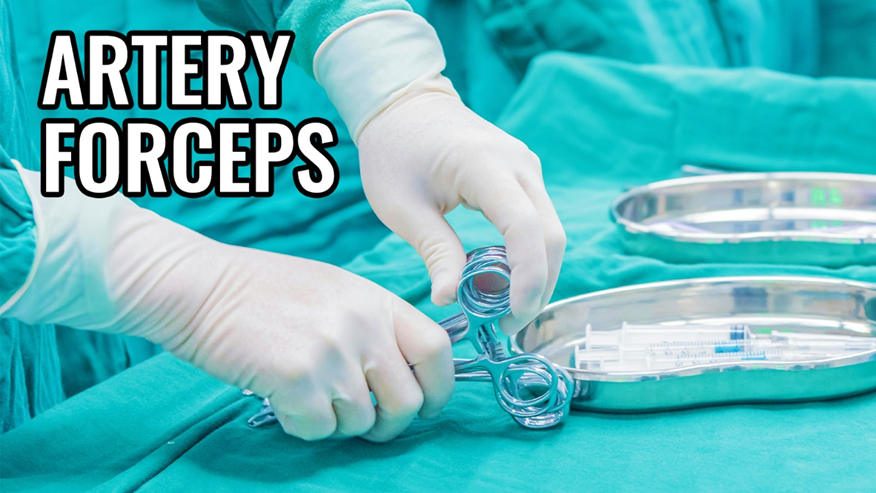
Surgical forceps have a long and fascinating history. The name comes from the Latin words formus (hot) and caper (to hold). To date, approximately 700 different types and shapes of forceps have been developed. Originally made from bronze and iron, they have evolved significantly with advancements in science and technology. Today, they are highly specialized and mostly made of stainless steel, making them more durable and efficient.
What are Artery Forceps?
The word artery refers to arteries that can be small, large, sensitive, or dense. Artery forceps are used to clamp these arteries to prevent blood loss and also to hold and manipulate tissues. They are of special importance because they help in dealing with delicate body parts.
Artery Forceps Main Parts:
- Handle
- Shank
- Jaws
- Ratchet
Surgical Forceps Uses in Surgery:
- Ligation: Artery forceps are used to load surgical ties for ligating a blood vessel, particularly in cases where the ligation site is difficult to access.
- Skin Ellipses: They can be used to minimize trauma or to retract skin ellipses.
- Nail Avulsion: It can be used for the avulsion of the nail. During this procedure, one end of the forceps is launched under the nail; subsequently, the forceps are rotated, and the nail’s edge is pulled out from the corner.
- Lumen widening: It is used to widen the lumen.
- Tract dissection: It can also be used to bluntly dissect a tract in the cutaneous tissue.
How do Artery Forceps work?
Artery clips consist of a ratchet. Firstly, the surgeon put pressure on the clip to open the ratchet. The surgeon holds the clip with the right thumb and forefinger while applying pressure with the middle and ring fingers to perform the specific task.
Other Names:
- Clamps: The Surgical forceps with locking mechanisms are known as clamps.
- Hemostats:The artery forceps that are used to control blood flow are called hemostats. They are typically used to block the flow of blood or other bodily fluids. Moreover, they play a crucial role in controlling bleeding during medical procedures.
- Ring Forceps: They are used for grasping sensitive body tissues or other objects. They look like ring scissors because they are hinged.
- Locking Forceps: They have a locking mechanism known as a ratchet.
Types of Artery Forceps:
- Kelly hemostats: Kelly forceps are used to grasp large blood vessels.
- Rochester forceps: They are similar to Kelly but have shorter serrations and can diagnose deeply.
- Mosquito forceps:They have short tips used to clamp smaller vessels. A longer version is also available, known as Halstead Mosquito Forceps.
- Allis forceps: Allis forceps are known for their sharp teeth. They are primarily used to extract tissues from sensitive regions while minimizing the risk of damaging healthy cells.
- Crile hemostats: Crile forceps are similar to Halsted mosquito forceps but are larger.
- Rochester-Oschner forceps: These hemostats are designed to clamp large and dense blood vessels. They have two other forms such as Rochester-Carmalt forceps and Rochester-Pean forceps.
Conclusion:
In surgeries that involve blood vessels, surgical forceps are indispensable tools. They are crafted to handle the delicate nature of vessels to prevent excessive bleeding and damage to healthy tissues. These forceps are classified based on their type and are used for clamping, as well as for cutting, dissection, and retraction.
Frequently Asked Questions
For what purpose artery forceps are used?
They are used for clamping blood vessels to prevent blood loss.
What is the other name for Artery forceps?
The other names for Artery forceps are clamps, hemostats, ring forceps, or locking forceps.
What are locking forceps?
The forceps that have a locking mechanism are known as locking forceps.
Please visit our website, Artema Medical, for more information.
